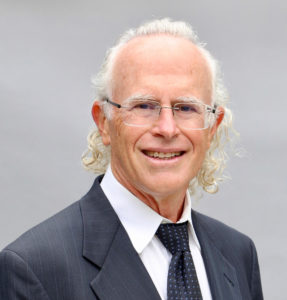2016 Leaders of Tomorrow: Rachel Pankratz, PT, WCC
Physical therapy and wound care innovation are rarely used in the same sentence, especially in long-term care. But for Rachel Pankratz, PT, WCC, it’s all in a day’s work. As director of therapy at Larksfield Place, a not-for-profit continuing care retirement community (CCRC) in Wichita, Kans., Pankratz has brought physical therapy (PT) from an ancillary service to a key part of integrated care.
Pankratz has built a team of 14 full-time therapists at Larksfield, which switched from using a contract therapy service five years ago. She’s also one of the only physical therapists in the Wichita, Kans. area who is certified in wound care.
The unusual melding of her two skill sets has already paid off for residents, especially those with diabetes and other conditions that affect sensation. One resident she’s working with had bumped into something in his apartment and ended up with an injury more serious than he’d thought. “He didn’t realize how bad it was because he couldn’t feel it,” she says. “It’s a thick 15-centimeter wound, and when those wounds don’t heal they affect every other part of mobility. If you have a wound on your foot, it’s unlikely you’ll to be able to walk, and it opens up the door for infection and all kinds of secondary complications, even amputation. So, it’s important to get early intervention and teach skills in skin care to get diabetics to check their own bodies every day.”
Physical therapy needs to be a coordinated team effort between the nursing team and the PT team, including wound care, she insists. “I’ve worked in places where nursing and therapy just hated each other and did their best to make each other’s job awful,” she recalls. “Now, I’m in a place where everybody works together because our No. 1 rule is to take care of the residents.”
Larksfield has transitioned into a facility that is ready to take the tough cases, not just the medically stable ones, she adds. “We’ve really turned the corner now. We have great nurses on board, and the whole team has grown in their ability to take care of higher acuity people that have more complicated issues medically and physically.”
Pankratz’ career journey started like many others—she needed a job. Back in 1991, she’d just completed a music degree but stumbled across an advertisement for a therapy aide in the local want ads. “I had no experience, but I managed to get a job with a contract company,” she says. “After my very first day with these therapists and working with elderly people, I thought, ‘This is it!’ For the first time in my life, I knew this is what I wanted to do.”
Once she began working in eldercare therapy, she absorbed new ideas and new research like a sponge, sharing them with anyone who wanted to listen. She attends conferences and brings in speakers to educate her peers on the latest therapy treatments, including those used in hospitals but new to the LTC setting.
“When I first came, I think we had 10 Medicare patients with skilled nursing care and then maybe five Part B private-pay patients in a community of 350. And my first thought was, there is absolutely no way we are meeting their needs. So I talked with [the CEO] on the different programs that were in my head, and said, “Hey, I would like to do this; can you give me a chance to try it?” He did. Now, our case load is tenfold—I think we probably work with 40 people in the outpatient independent living setting and 30 more in our Medicare/Medicaid skilled nursing sections.”
The nursing staff and aides can learn good lessons from the physical therapists, especially in that “no pain, no gain” aspect, she adds. “If a resident can put his left arm in his shirt and do two of his buttons, then let him do that,” even if it would be easier to do it for him, she says. “If another resident can come back to standing but needs a little help to walk to the chair, let him do what he can, because that keeps him stronger longer and it keeps him less likely to fall, less likely to decline.”
Pankratz also championed the idea of extending therapy to the independent living sector of her community by focusing on fitness and wellness aspects. The therapy team is always on the watch for the smallest change in gait, the smallest change in function—and anything that could indicate a declining condition or a falls risk.
The CCRC added a new wing last year to expand its therapy service line, and the community is building new wellness outreach programs to bring in the assisted living and independent living members of its resident population. Engaging residents about physical wellness and healthy functioning earlier in the care levels should improve their overall health and keep the onset of problems from slipping through the cracks, Pankratz adds. “Yes, the population is aging. But, for the most part, these people just want to stay healthy and active, and they want to maintain their lifestyles.”

Pamela Tabar was editor-in-chief of I Advance Senior Care from 2013-2018. She has worked as a writer and editor for healthcare business media since 1998, including as News Editor of Healthcare Informatics. She has a master’s degree in journalism from Kent State University and a master’s degree in English from the University of York, England.
Related Articles
Topics: Articles , Clinical , Leadership , Rehabilitation











